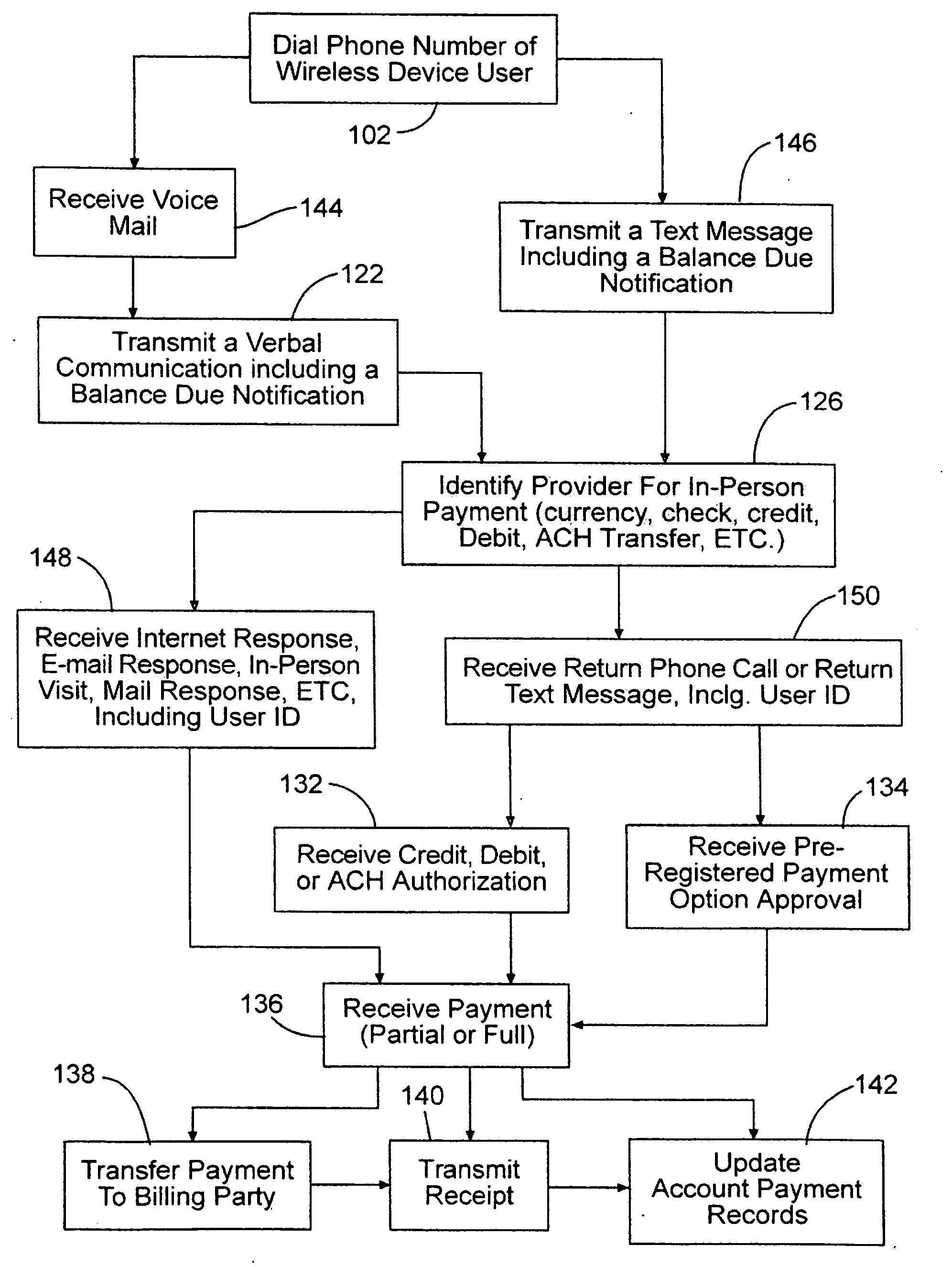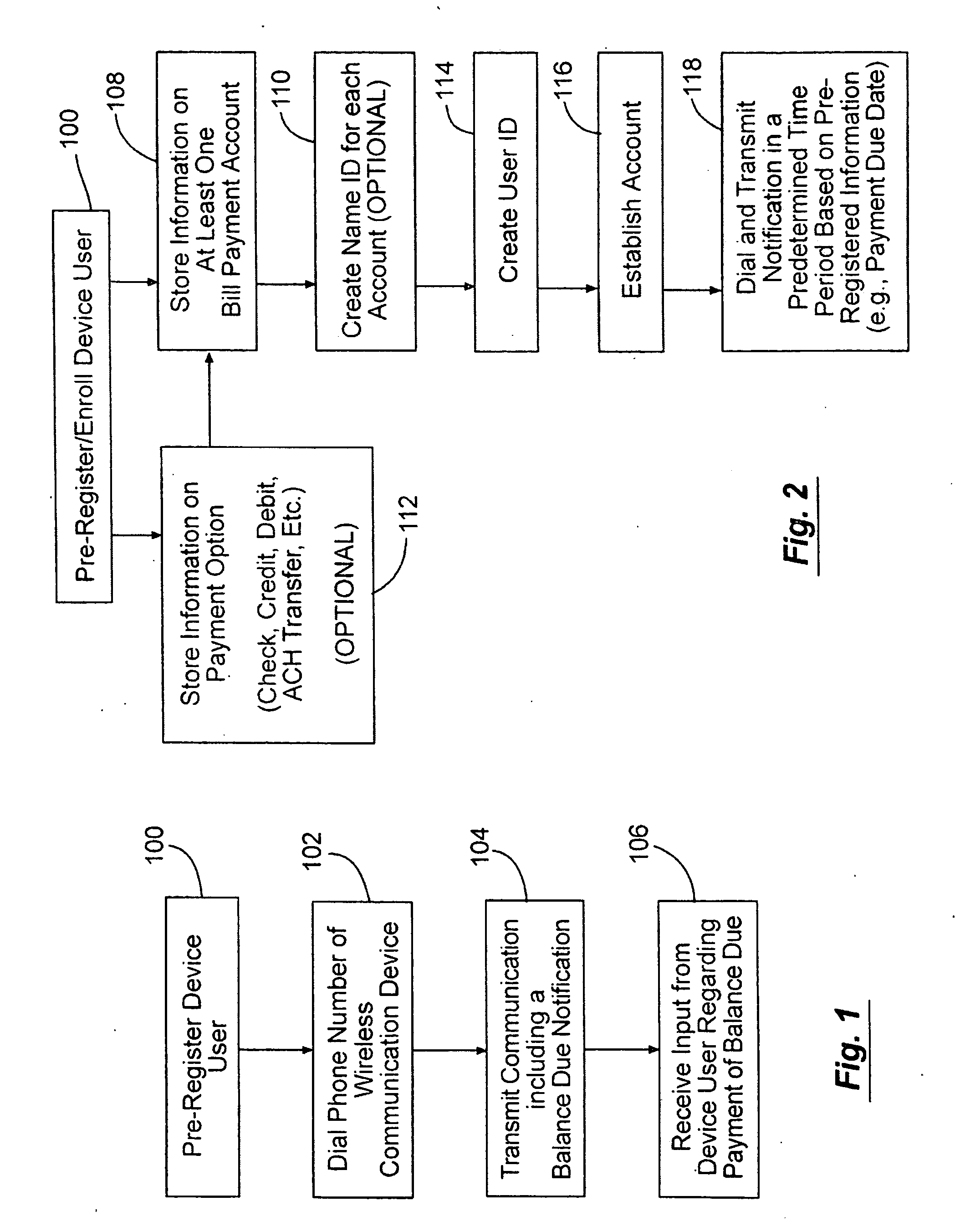Wireless communication device account payment notification systems and methods
a technology of wireless communication and notification system, applied in the field of wireless communication device account payment notification system and method, can solve the problems of bill payers' unpaid bills, possible overdue bills, and laborious methods for bill payers
- Summary
- Abstract
- Description
- Claims
- Application Information
AI Technical Summary
Benefits of technology
Problems solved by technology
Method used
Image
Examples
Embodiment Construction
[0024]Embodiments of the present invention provide methods and systems for account payments. In particular, the present invention provides methods and systems that allow a provider to deliver account payment information to a wireless communication device user. Such methods and systems advantageously allow for notification of account payment and optionally payment in a time efficient and cost effective manner to both the device user / bill payer and the provider / billing party. Moreover, such methods take full advantage of the wireless communication technologies, such as cell phones and PDA's, to provide instant billing notification to a wide base of wireless device users who may conveniently receive such bill delivery and optionally transmit a payment at virtually any location and / or any time.
[0025]The flow diagram of FIG. 1 illustrates one method of providing account payment notification to a wireless communication device user according to the present invention. At block 100, the prov...
PUM
 Login to View More
Login to View More Abstract
Description
Claims
Application Information
 Login to View More
Login to View More - R&D
- Intellectual Property
- Life Sciences
- Materials
- Tech Scout
- Unparalleled Data Quality
- Higher Quality Content
- 60% Fewer Hallucinations
Browse by: Latest US Patents, China's latest patents, Technical Efficacy Thesaurus, Application Domain, Technology Topic, Popular Technical Reports.
© 2025 PatSnap. All rights reserved.Legal|Privacy policy|Modern Slavery Act Transparency Statement|Sitemap|About US| Contact US: help@patsnap.com



